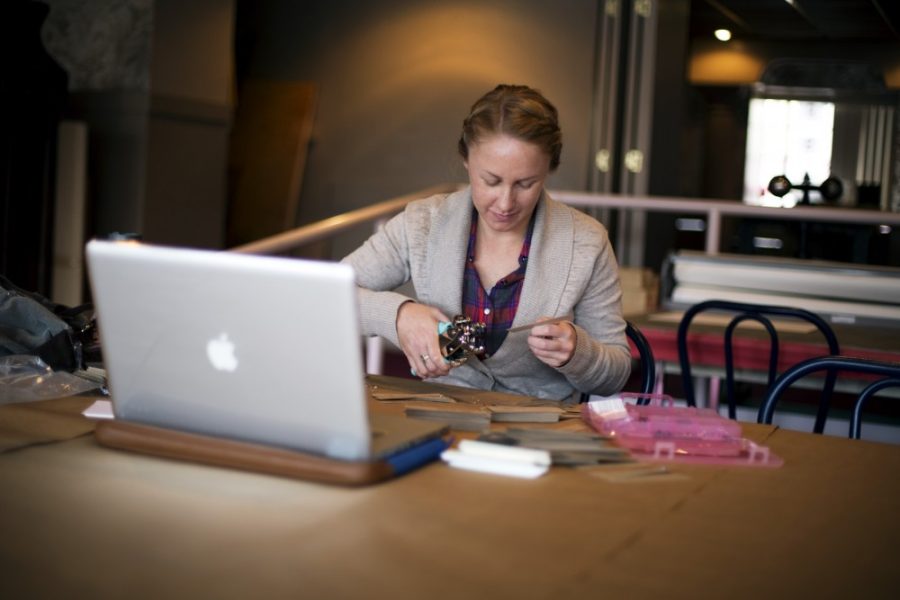In a former Italian restaurant north of Speedway, UA students are using some old methods to produce their work.
The Book Art and Letterpress Lab gives students the opportunity to work with printing presses, hand-mixed ink and other methods from the past in place of modern digital means, all for upper-division credit.
Karen Zimmerman, an associate professor at the School of Art, manages the lab and teaches the class “Letterpress and the Multiple.”
Zimmerman said she has always been interested in the process of printing as a graphic artist. The printing press combines typography and image as well as printing production.
“I personally love the magic of printing, where you start with nothing and then the image appears on your paper through your work,” Zimmerman said. “There’s something really magical about that process.”
Inside the lab, printing presses from decades ago are spread out in a former campus eatery, Corleone’s, an Italian restaurant whose red carpet, silver floral wallpaper and mood lighting still provide the backdrop to students working away with this collection of antiquated machines.
The majority of the equipment in the lab is donated, according to Zimmerman. Most of that donated equipment comes from the late Jack Sinclair, an artist from New Mexico, whose large donation in 2011 led to the opening of the lab. The oldest piece of equipment in the lab is a Midget Reliance hand press, a model originally produced around the 1820s, which is currently in the process of being restored, Zimmerman said.
“The school is very lucky to have this equipment,” Zimmerman said. “There are not very many schools that have this much and it’s a fantastic resource for students to be able to print their own work.”
Students in Zimmerman’s class are currently working on their final projects, which involve creating a series on any topic, according to Zimmerman. These topics range from a collection of local wildlife to League of Legends playing cards.
Sebastian Campos, a studio art senior, is seeking to educate others in Mexican slang terms borrowed from the English language through a matching game with playing cards he will produce in the lab for his final project.
“For example, people say ‘cereal,’ but in some certain areas [in Mexico], this slang has taken over and everybody refers to cereal as Corn Flakes, no matter what kind of cereal it is,” said Campos.
Melanie Hall, a studio art junior, is working on creating an infographic handout and postcards on ocean pollution for her final project, a topic she said interests her. Hall said she enjoys working with the printing press and is taking the class for honors elective credit.
“I like printing in this more manual way versus digital,” Hall said. “I think it’s nice because you get the impression on the paper and everything you don’t really get with digital printing.”
Students can handset the type for their work, like setting the font on a Word document, Zimmerman said, so instead of scrolling through font styles and sizes, students comb through an oak wood cabinet in the lab to select their fonts. Zimmerman said students also have to mix ink to create their own colors instead of just choosing the color on the monitor.
“From a teaching perspective, it’s rewarding to see students make their own work instead of sending it out or hitting print on the computer,” Zimmerman said. “It’s much more involved.”
The Book Art and Letterpress Lab is not solely for students. Occasionally, workshops are offered on the weekends that anyone can come in and take. Zimmerman said it’s important to learn about these kinds of printing methods because of their historic importance.
“It’s just an interesting area to be in,” Zimmerman said. “It’s a part of our history of communication — from newspapers to Gutenberg’s 42-line Bible.”
– Follow Ethan McSweeney @ethanmcsweeney









